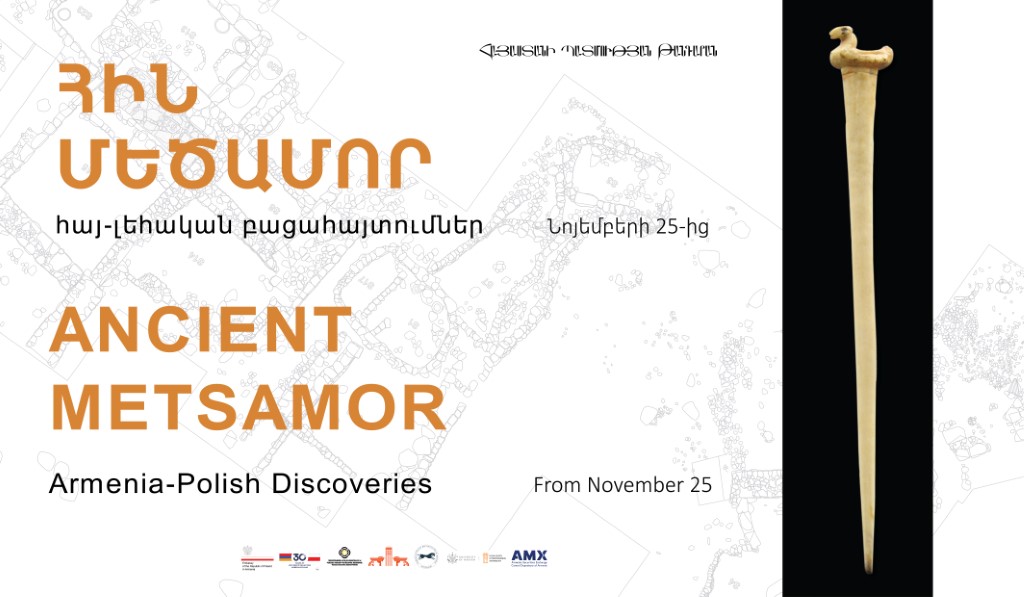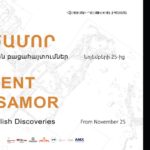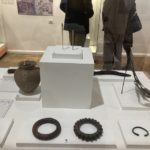For ten years now, archaeologists from the University of Warsaw (UW) have been working in Armenia. An exhibition on the Armenian-Polish excavations in Metsamor in the Ararat Valley began on November 25 at the History Museum of Armenia in Yerevan.
The Metsamor expedition, under the direction of Dr. Krzysztof Jakubiak, Prof. UW, and Prof. Ashot Piliposyan of the Service for the Protection of Historical Environment and Cultural Museums-Reserves of Armenia on the Polish side, is working on behalf of the Faculty of Archaeology and the Polish Centre of Mediterranean Archaeology UW.
The exhibition will feature not only plates presenting the history and results of the expedition’s research, but also the most important artifacts discovered during the course of the excavations. Among them are storage vessels dating back to the 9th century BCE, which, as confirmed by archaeobotanical analyses, were used to store cereals. A rare cylinder-stamp seal from the period of the Urartu kingdom (8th to 6th centuries BCE), bone objects, including elements of horse harness from the 7th century BCE, ancient glass vessels and decorated pins will also be on display. Also exhibited are gold and bronze pendants and parts of necklaces. Much of the gold ornaments were discovered during excavations conducted in the Autumn of this year.
This year’s Autumn excavation season has yielded further important information on the functioning of the city and the wealth of its inhabitants at the turn of the 2nd millennium BCE.
In the eastern part of the so-called “lower city,” archaeologists uncovered the remains of a very large building, most likely of a public function, with a well-preserved rectangular columned hall. The colonnade originally consisted of two rows of wooden columns supporting a reed roof with wooden beams. Nine stone bases for the columns were uncovered, as well as burnt fragments of beams and roofing.
Preliminary analysis of the equally well-preserved material found on the floor of the room, supported by the results of radiocarbon dating of one of the burnt beams, indicates that the column room was used in the early Iron Age, between the late 11th and early 9th century BCE, making it one of the oldest such structures known from the Southern Caucasus and Eastern Anatolia. The room was most likely used for economic purposes. Its exact function will be determined by ongoing archaeobotanical and geochemical analyses.
The existence of a large public building in the center of the lower city indicates that Metsamor had been a well-organized urban center long before the Urartu kingdom captured the area. This is confirmed by the remains of a regular residential building erected along partially paved streets, another of this season’s discoveries.
Also exceptional was an intact cist grave dating to the end of the Late Bronze Age (1300-1200 BCE), in which two unusually richly furnished burials were found. More than a hundred gold beads and pendants, over a dozen complete ceramic vessels and a unique faience flask, an import from the Syro-Mesopotamian borderland, as well as the remains of a wooden burial bed were found during the exploration of the tomb chamber.
The exhibition on Metsamor is part of the celebrations of the 30th anniversary of the establishment of Armenian-Polish diplomatic relations. The organizers of the exhibition are the Embassy of the Republic of Poland in Yerevan, the Service for the Preservation of Historical Heritage and Cultural Museums-Reservations, the Museum of Armenian History and the Sardarapad Ethnographic Museum. The exhibition was prepared by Ashot Piliposyan and Hasmik Simonyan.
-
Poster of the exhibion // Plakat wystawy
-
Opening of the exhibition on the Armenian-Polish excavations in Metsamor // Wernisaż wystawy na temat armeńsko-polskich wykopalisk w Metsamor (Fot. Hasmik Simonyan)
-
Opening of the exhibition on the Armenian-Polish excavations in Metsamor // Wernisaż wystawy na temat armeńsko-polskich wykopalisk w Metsamor (Fot. Hasmik Simonyan)
-
Exhibition on the Armenian-Polish excavations in Metsamor // Wystawa na temat armeńsko-polskich wykopalisk w Metsamor (Fot. Hasmik Simonyan)
-
Carnelian and gold objects from the Late Bronze Age // Karneolowe i złote ozdoby z grobu z epoki brązu (Fot. Tigran Zakyan)
-
The column hall seen from the air // Sala kolumnowa (Fot. Marek Truszkowski)








